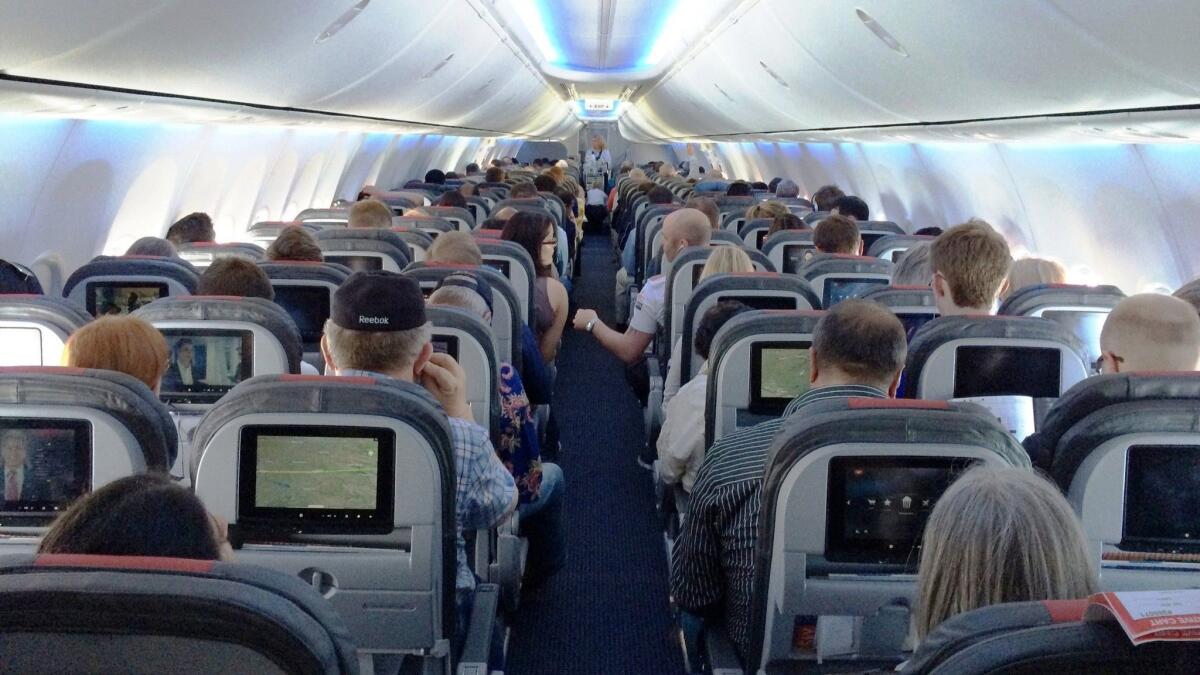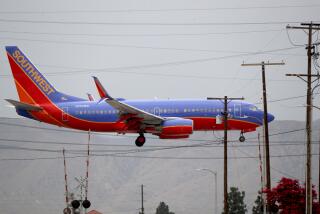Satisfaction with airlines drops. Travelers cite in-flight service and uncomfortable seats

Around the time the nation began buzzing about a United Airlines passenger who was dragged from his seat last year, bloodied and injured, a nationwide survey began calling travelers and asking their opinions on the airline industry.
So it may be no surprise that the latest annual American Customer Satisfaction Index study of more than 12,000 Americans found that satisfaction with airlines dropped 2.7%. The decline nearly reversed all of last year’s rise in customer satisfaction that the 2017 survey attributed to lower fares and improved customer service.
When asked to rate each part of the flight experience, the travelers surveyed gave “seat comfort” the lowest rating: a score of 69 out of 100. Quality of in-flight services such as food, drinks and entertainment slipped to a score of 73, down from 74 the year before.
And United Airlines — whose executives later apologized for the infamous dragging of Dr. David Dao from an overbooked flight last April — had a 4% drop in its score, the biggest decline in the survey.
Southwest Airlines had the overall highest satisfaction score: 80 on a scale of zero to 100. “Keeping fares low and service levels high while growing its network has helped Southwest reclaim its lead from JetBlue,” the report says. JetBlue’s score slid to 79 from 82.
But timing is everything with surveys. This survey stopped questioning travelers March 18. That was nearly a month before an engine on a Southwest flight failed, sending shrapnel into the fuselage and killing a passenger.
The lowest satisfaction scores were for Frontier and Spirit airlines, two ultra-low-cost carriers that offer bargain-basement fares but impose a menu of fees, including a charge to bring a carry-on bag into the cabin. Both scored a 62.
To read more about the travel and tourism industries, follow @hugomartin on Twitter.
More to Read
Inside the business of entertainment
The Wide Shot brings you news, analysis and insights on everything from streaming wars to production — and what it all means for the future.
You may occasionally receive promotional content from the Los Angeles Times.











